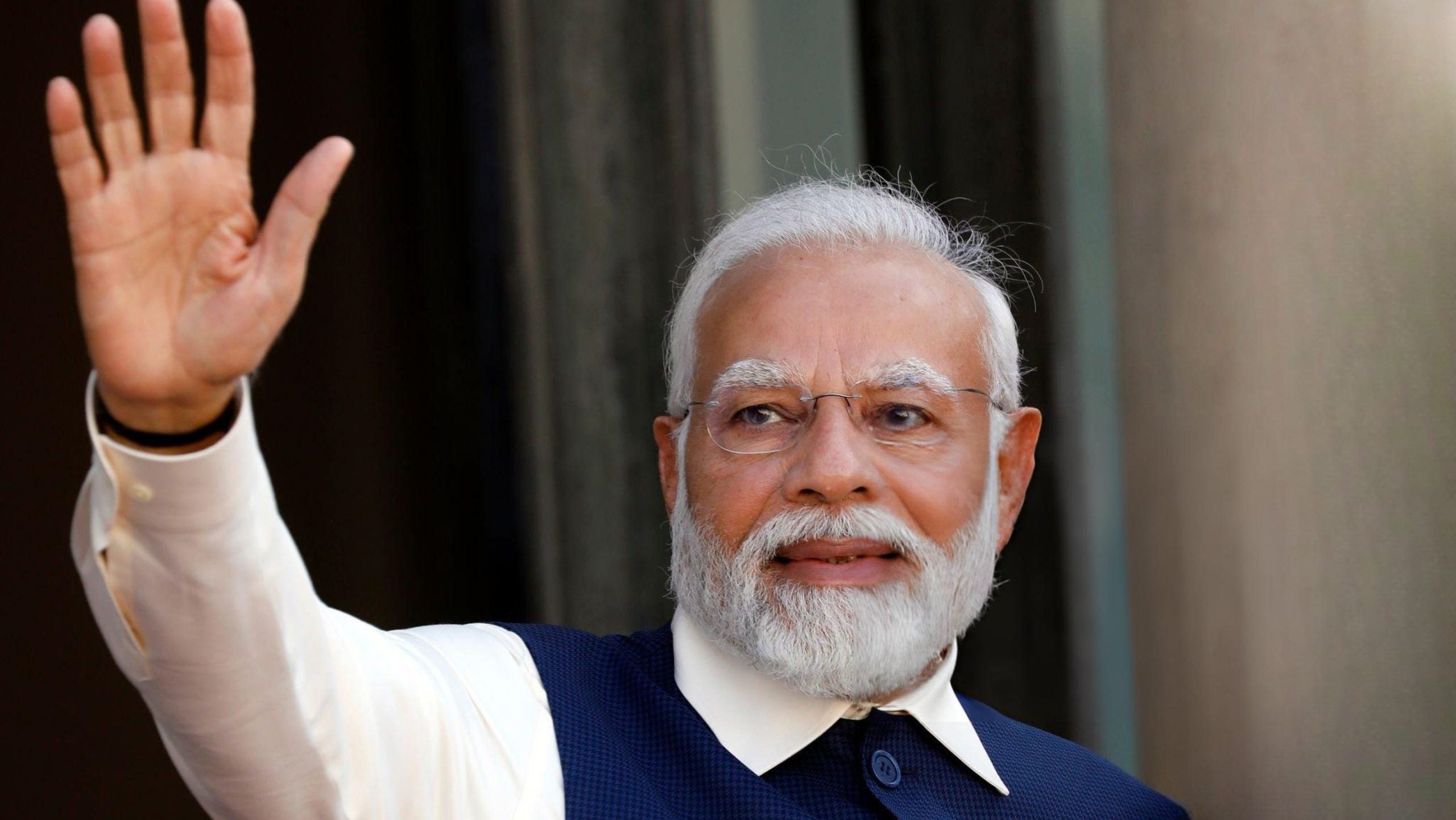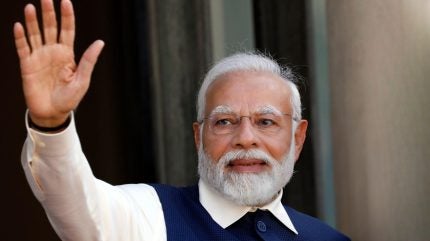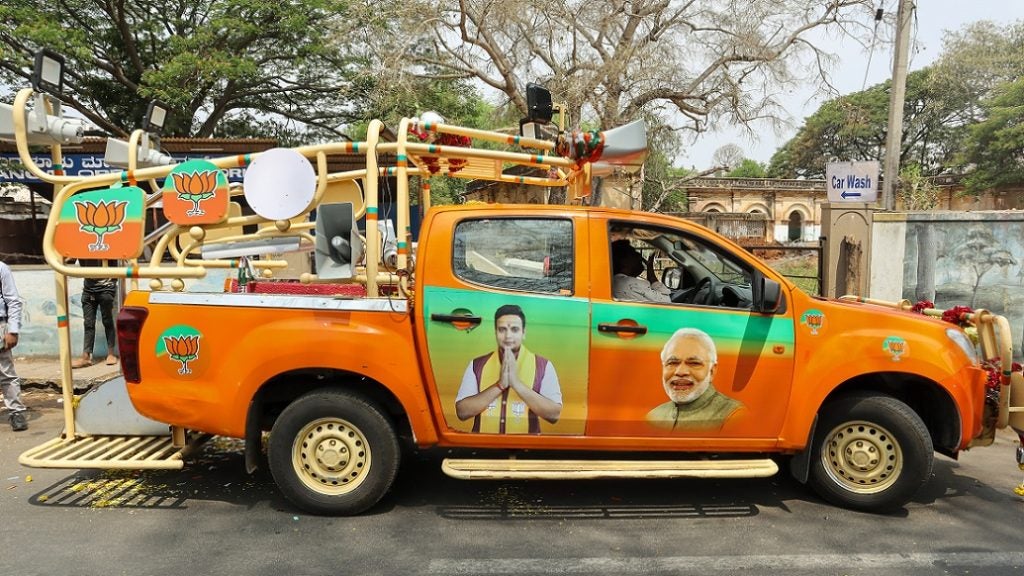

India is in the first week of its general election, a poll that runs from 19 April to 1 June in seven phases. The election is seen as likely to bring Prime Minister Narendra Modi’s BJP (Bharatiya Janata Party) party back to power for a third term. Although most food industry executives Just Food contacted are cautious about making any comments deemed to be critical of the current Modi government, common issues emerged from those conversations where it is believed action from a new administration could benefit the sector.
One area of consensus was on fiscal measures, with several industry watchers calling for a reduction in the sales tax on smaller-sized consumer food products.
“Taxes on food products are very high [in India] compared to other countries,” Piruz Khambatta, the chairman of Ahmedabad-based food and beverage manufacturing business Rasna and a former chairman of the Confederation of Indian Industry’s (CII) national food processing committee, says. “All processed food products should be at an even rate of 8% and non-processed food products should be at a ‘zero’ tax rate.”
At present, India’s goods and services tax (GST) on food products is charged at five different rates, ranging from zero on bread to 28% on cocoa-based chocolates.
“Small packs of many items costing Rs5 have a tax component of Rs1, which is very high for a poor person,” Dr Girish Gupta, the CEO of Foodees Group of Consultants and the national president of the Food Industry Welfare Association, tells Just Food.
However, according to Himanshu Manglik, president of Gurgaon-based consultants Walnutcap and formerly a senior executive for Nestlé in India, the Modi government has resisted lowering GST rates and is unlikely to cut them should it return to power after the polls. “But the fact is that a lowering of tax would be good to revive the industry by bringing in affordable food to the people,” he says.
Access the most comprehensive Company Profiles
on the market, powered by GlobalData. Save hours of research. Gain competitive edge.

Company Profile – free
sample
Your download email will arrive shortly
We are confident about the
unique
quality of our Company Profiles. However, we want you to make the most
beneficial
decision for your business, so we offer a free sample that you can download by
submitting the below form
By GlobalData
Affordability is a major issue in India, which has the world’s largest population – exceeding 1.4 billion people – to feed, while its unemployment rate in February was at 8%, according to the Centre for Monitoring Indian Economy (CIME). “A large part of the Indian population does not have sufficient money to buy branded food products,” Manglik says. “If this [higher sales tax rates] continues, it is going to be tough for the industry to generate more demand.”
Instead, the Indian government has focused on food subsidies for the poor. According to the Indian Ministry of Consumer Affairs, Food & Public Distribution, 813.5 million people are eligible for ‘Pradhan Mantri Garib Kalyan Anna Yojana’ (PM-GKAY), a free grain distribution scheme on which the government plans to spend Rs11.8trn ($143.9bn) over the next five years.
To compensate for recent sluggish demand, big food companies operating in India have been looking to develop more premium products with higher profit margins to maintain their bottom line, Manglik says, although he adds the practice is not sustainable. “Improving incomes is the longer-term goal but [sales] tax reductions could also improve the situation.”
However, according to Kuldeep Sharma, founder of Suruchi Consultants, which focuses on the dairy industry, a third term for Modi may see sales taxes on certain food items even go up and some subsidies reduced. “Subsidy would be moved from end producers to the input products, such as cattle feed and semen shots, where prices of these products have been [running] very high,” he tells Just Food.
India’s large dairy industry would also benefit from a new administration upgrading its digital networks for livestock management, disease monitoring and building a national database using digital technology, Sharma says. “Agencies are even working on facial recognition for cows, which could be used in cattle insurance and other such things.”
Hundreds of millions of dollars are spent every year by the Indian government on cattle vaccination and subsidising semen, Sharma says. To audit these outlays, he argues for robust traceability and identity preservation tools, which include ID cards and AI protocols.
Under the scheme, cattle identity cards will also be used for a cattle census and to provide a direct beneficiary transfer of milk subsidies, which until now goes through milk cooperatives, Sharma explains. “These identity cards will be linked to the Aadhar cards [social security number] of the farmers, which in turn are already linked to their bank accounts,” he said, “Now the system can also identify the breed of cow from which a particular lot of milk has come,” improving transparency for food processors.

Among the other ongoing concerns within the Indian food industry include high logistics costs that make the sector uncompetitive, Rasna’s Khambatta says. He and his colleagues would like the government to take steps to bring these costs down. “Grants under the Production Linked Incentive scheme [of the central government] should be enhanced and made accessible to more enterprises and product categories,” he says.
Khambatta believes India’s government should also do more to help food companies market their products abroad. He puts forward the idea of an enhancement to India’s Market Development Assistance provided to small exporters, funding their airfare to overseas trade fairs, contesting anti-dumping cases and helping create publicity material.
There have been calls for India’s government to do more to promote the industry even domestically. “The food processing industry’s vision for the next five to ten years should be to increase the sector’s contribution to [Indian] GDP from the current 8% to 20%,” Milind Pingle, the CEO of Allana Consumer Products, a Mumbai-based food manufacturer and supplier, wrote in The Times of India last July. This could be achieved by focusing on the development of backward and forward linkages, increasing the share of processed foods in the country’s total food consumption and expanding the sector’s reach in the eastern and north-eastern regions of the country, Pingle said.
A support scheme promoted by India’s Ministry of Food Processing Industries, Pradhan Mantri Kisan Sampada Yojana, addresses many of these issues by funding the creation of supply chain management infrastructure, employment opportunities (especially in rural areas) and reducing wastage of agricultural produce, a Ministry statement read. The scheme provides grants for setting up food sector industrial parks, integrated cold chains, agri-processing clusters, food processing units and services offering safety and quality assurance.
Foodees received one such grant for a potato chips manufacturing unit near the capital New Delhi, Gupta says. “A subsidy of 35% (with a maximum value of Rs50m) is granted to a new food processing unit that has a total investment of over Rs30m in addition to interest subsidy,” he says.
In four years from 2019, 682 projects backed by grants totalling Rs35.3bn were approved under this scheme, the central government’s former Minister of State for Food Processing Industries, Prahlad Singh Patel, told the Lok Sabha, the lower house of parliament last August.
The government promises to continue such schemes. In its election manifesto, released on 14 April 14, Modi’s ruling BJP said: “We will establish smart food processing hubs equipped with cutting-edge technologies to enable comprehensive monitoring of the entire food supply chain, from farm to table, ensuring quality, traceability and operational efficiency.”
The manifesto also promises funds for agri-infrastructure projects, such as offering investment help for establishing storage facilities, irrigation, grading and sorting units, cold storage facilities and food processing. “We will position Bharat [India] as a major player in value chains of processed fruits, vegetables, fish, seafood and dairy, among others,” it said.
If Modi wins the election, especially with an increased majority, his power will increase further and he could make bolder decisions. “If we go by what he has been doing until now, it is likely to push control into the hands of a few major food companies, which initially might show prosperity and modernisation but will not be good [as a policy solution] in the long run,” Manglik reflects. “[A] bold decision from him would actually be to reverse some of these [past] policies and go closer to the farmers and set up committees to find out what could be done for them.”
As for now, however, the Indian food industry’s sentiment remains largely upbeat. Khambatta says: “I am very optimistic that this decade is going to be India’s decade and food processing will grow, as well as processed foods exports from India.”

